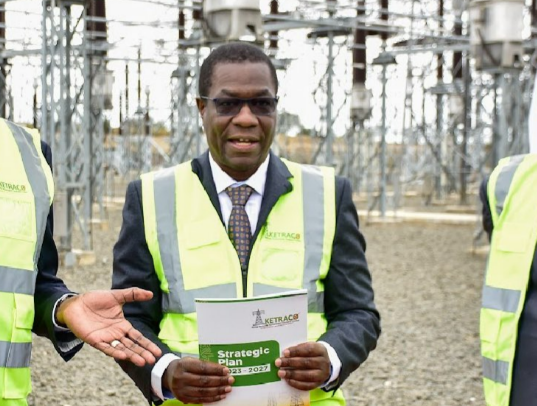On Friday morning, most parts of the country experienced power outages. Kenya Power reported that the outage affected the entire country except for the North Rift and Western regions. By Friday evening, the utility company had restored full power supply to all affected areas.
In a separate statement, Energy CS Opiyo Wandayi clarified the cause of the outage, stating that a high-voltage power transmission line had tripped at the Suswa transmission substation.
“Today, Friday, September 6, 2024, at 8.56 am, the 220kV High Voltage Loiyangalani transmission line tripped at the Suswa substation while evacuating 288MW from the Lake Turkana Wind Power (LTWP) plant,” Wandayi said in a statement.
He added that the trip was followed by a trip on the Ethiopia – Kenya 500kV DC interconnector that was then carrying 200MW, resulting to a total loss of 488MW.
“The total demand in the system at the time was 1790 MW. The loss of 488MW, accounting for 27.3 per cent of the total generation, resulted in cascade failure and partial collapse of the grid,” Wandayi said.
The CS said the trip triggered power outage in the country except parts of Western Kenya which was supported by supply through the interconnector to Tororo, Uganda.
He said that restoration efforts commenced immediately and in earnest.
“As of 11.30 am this morning, the Ministry had normalised supply to parts of the North Rift, Central Rift, Nairobi and Mount Kenya regions,” he said.
The power outage on Friday morning impacted major towns and cities across the country, including Nyeri, Embu, Kirinyaga, Nanyuki, Nakuru, Naivasha, Thika, Eldoret, Kericho, Kakamega, Siaya, Busia, Vihiga, Kisumu, Bungoma, and Webuye. Kenya Power apologized for any inconvenience caused to its clients. This outage follows a recent blackout that affected several areas of the country.
Energy CS Opiyo Wandayi stated that the ministry is exploring both short-term and long-term solutions to address the issue, including involving the private sector to support government efforts. The ministry is seeking to lift the moratorium on Power Purchase Agreements imposed by the National Assembly to facilitate this.
Additionally, the CS outlined plans to accelerate the implementation of baseload generation projects, such as hydro and geothermal, to enhance energy security and provide sufficient spinning reserves. The government will also work on improving grid flexibility and resilience through various projects, including:
– Turkwell-Ortum-Kitale
– Sondu-Ndhiwa
– Nanyuki-Isiolo
– Narok-Bomet
– Mariakani substation
– Repair of Loiyangalani-Suswa Transmission line for double circuit operation
– Migration from 220kV to 400kV operation
– Completion of ground electrode for HVDC bipolar operation
– Lessos substation
– Installation of STATCOM for voltage regulation at Suswa and Rabai
The government will also prioritize the construction of alternative evacuation lines to further improve the energy infrastructure.



